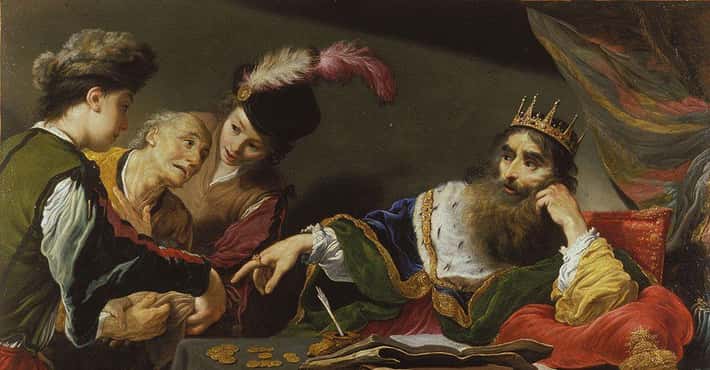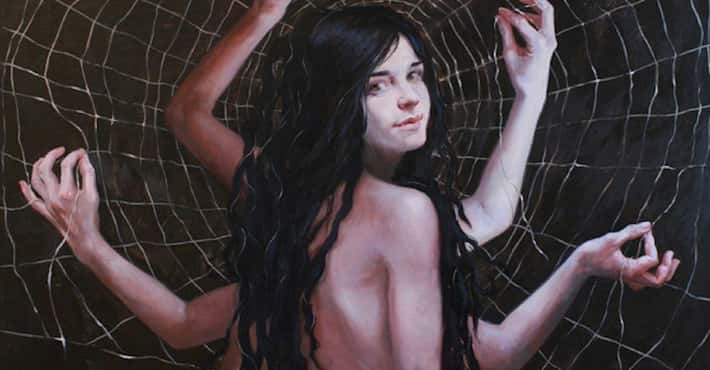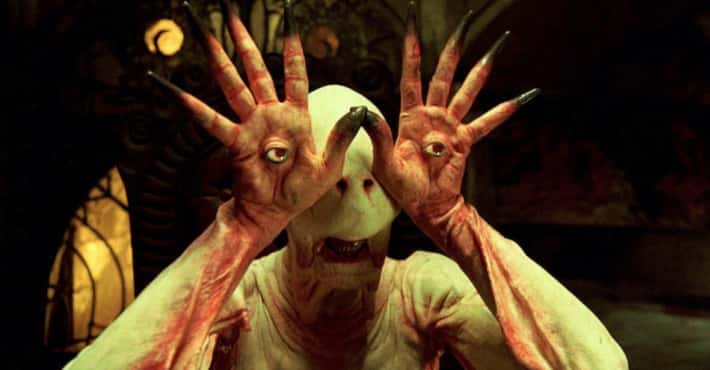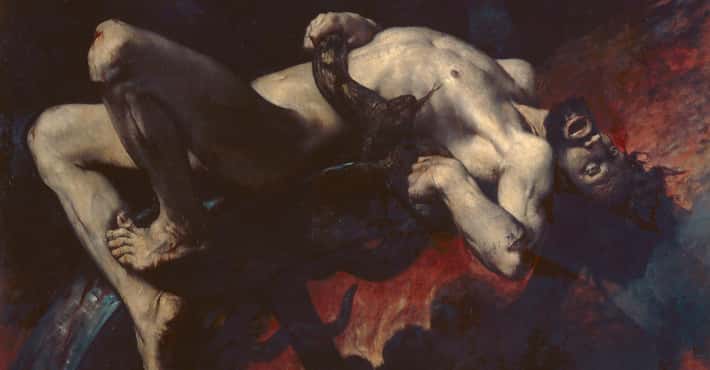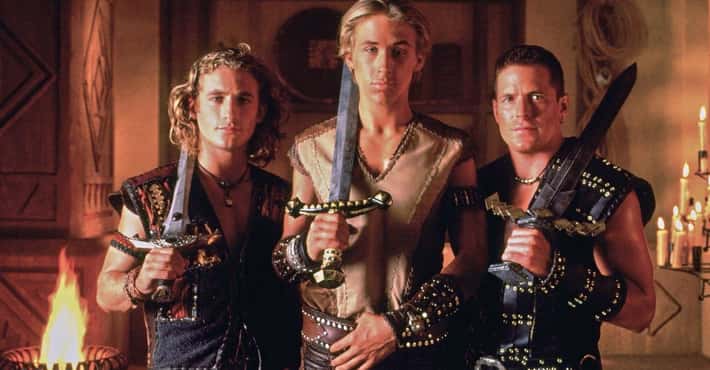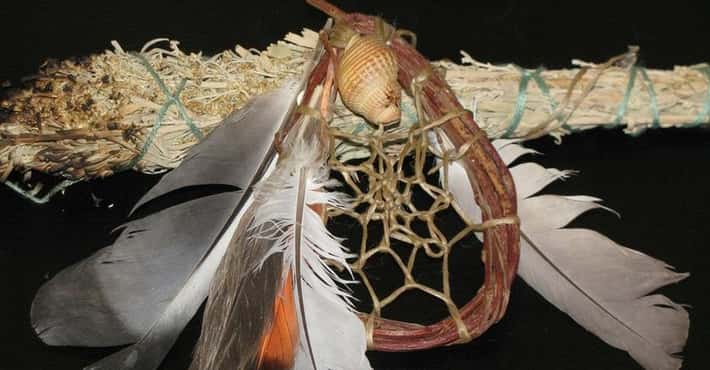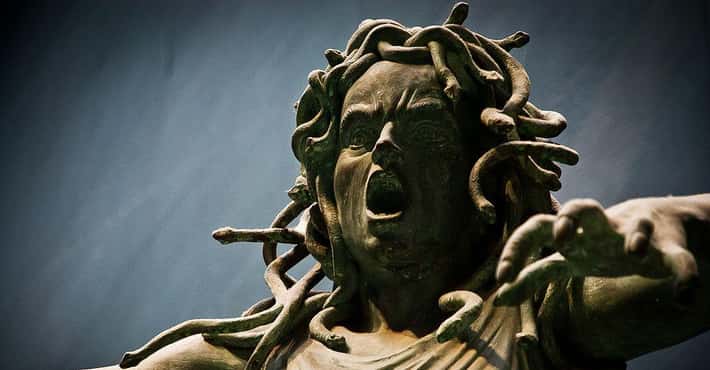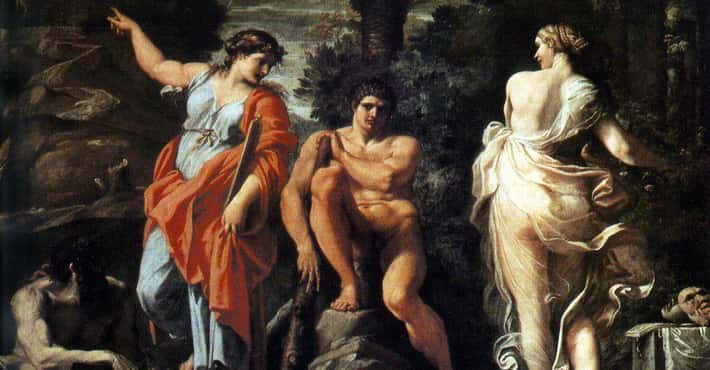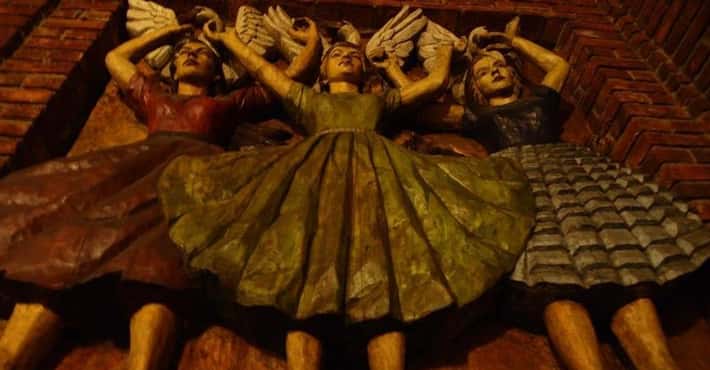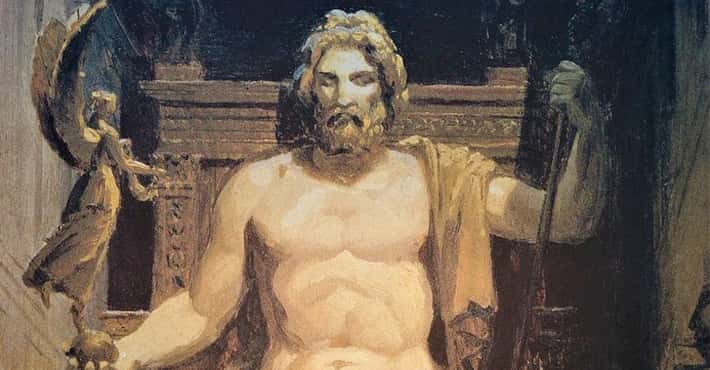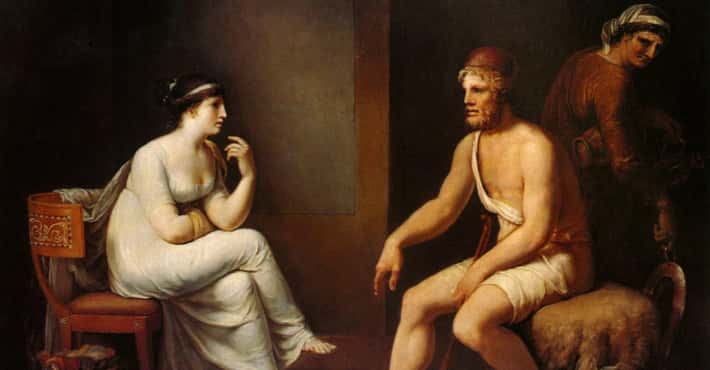Creepy African Legends and Myths
Africa has a rich tradition of folklore. African myths are often passed down orally between families and communities, but writers have been diligently recording these stories for decades. One thing to remember is that the African continent is enormous; its landmass could contain the United States, China, Japan, the UK, and Eastern Europe with room to spare. And of course, with so many stories from such a large area, some of them were bound to be creepy.
There are classic African folktales, myths, and modern African urban legends on this list, all of them spine-tingling. Whether they're from Madagascar, Zaire, Zimbabwe, or South Africa, these stories will keep you up at night.- 1391 VOTES
The Man-Eating Tree of Madagascar Swallows Human Sacrifices
According to legend, Polish biologist Dr. Omelius Fredlowski received a very strange letter in the early 1870s. It was from a German explorer named Carl Liche, who claimed to have seen something horrific in Madagascar.
Liche claimed that he had been living with and researching a tribe called the Mkodos. Members of the tribe took him to a tree they called the "tepe," where they started a ritual. The tree was oddly shaped, with tentacle-like leaves sprouting from its trunk. Suddenly, a woman was pushed towards it. She climbed to the top of the tree, drank a liquid that was trickling out of its center, and the tentacles came to life. They surrounded her immediately. She was completely ensnared, her body hidden from view by the leaves that gripped her. All Liche could hear was her screams.
He wrote,
The retracted leaves of the great tree kept their upright position during ten days, then when I came one morning they were prone again, the tendrils stretched, the palpi floating, and nothing but a white skull at the foot of the tree to remind me of the sacrifice that had taken place there.
- 2304 VOTES
The River God Nyaminyami Terrorizes Dam Builders
In the 1950s, construction started on a dam on the Zambezi River in Kariba, Zimbabwe. The project was fraught with accidents and deaths. According to one legend, a river god called Nyaminyami is to blame.
The Tonga people, who lived along the river before the dam was built, believe that Nyaminyami has the head of a fish and the body of a snake. An historic flood caused yet another accident at the dam construction site and some of the workers went missing. The Tonga people asserted that Nyaminyami was to blame; he was unhappy about the dam being built. The only way to please him, they said, was to offer a sacrifice.
A cow was killed and set adrift on the river. The next day, the cow was nowhere to be found, but the bodies of the missing workers had appeared on the banks of the river.
- 3180 VOTES
The Shape-shifting Popobawa Assaults Its Victims at Night
The Popobawa hails from Zanzibar. The name means "bat wing," though this nocturnal demon can take on many different shapes and forms. The legend goes that this giant winged creature is let loose by witches to torment their enemies: at night, the popobawa turns into a man and sexually assaults both men and women.
During popobawa scares, people are advise to stay awake all night, often gathered around an open fire, to keep watch.
- 4193 VOTES
The Castle of Good Hope Conceals a Haunted Torture Dungeon
The Castle of Good Hope was built by the Dutch East India Company in 1679 as a place for their ships to dock and replenish their supplies on long journeys. The giant star fort became a thriving center in Cape Town and housed a church and shops, among other things. At one point, it was partially converted into a prison. It's now a historical monument, and apparently, it's super haunted. Visitors have seen a lady in gray and a ghostly figure with no legs, and heard footsteps, voices, and screams. But by far the creepiest part of this place is the Donker Gat torture dungeon. Yep, an honest-to-god torture dungeon.
Guards at the castle purportedly refuse to patrol the area near the dungeon after nightfall. If they get too close, they feel like they're being sucked into a vacuum. They have also described an overall creepy, evil feeling in the room, so yeah - don't go in the torture dungeon, folks. - 5253 VOTES
The Tokoloshe Attacks Women With Its Giant Penis
Tales of the Tokoloshe stem from several countries in Africa, including South Africa and Zimbabwe. The tokoloshe is said to be a hairy, grotesque, dwarf-like creature - with a huge member and ravenous appetite. It's not entirely clear why the tokoloshe assaults sleepers, but some women have taken to raising their beds with stacks of bricks to make it harder for the creature to reach them.
- 6173 VOTES
The Grootslang Guards a Hidden Stash of Diamonds
In South Africa, legend has it that there is a diamond cave hidden deep beneath the Richtersveld, a rocky, mountainous region in the country's northwest corner. But no one's ever excavated it, because the monster that guards its entrance is so terrifying that many would-be explorers refuse to go near it. And those that have tried? Most of them were never seen or heard from again.
The monster is known as the Grootslang and it's described as a giant, 50-foot-long snake with diamonds for eyes. It bursts straight of out of hell to protect the cave and make sure the treasure stays safely below ground.
- 7156 VOTES
The Kongamato Overturns Boats, Drowning Its Victims
Frank Melland described a legend from the Kaonde people of Zambia in his 1923 book, In Witch-bound Africa. Melland spent several years living with the Kaonde and heard tales about the kongamato, or "overwhelmer of boats," a giant winged creature which lives in rivers and overturns boats, capturing and killing the occupants. Oh, and it flies. Because why wouldn't a terrifying river creature also fly?
When Melland showed some pictures of pterodactyls to the Kaonde, numerous people identified the dinosaur as a kongamato. - 8193 VOTES
The Spider God Anansi Fooled Death
In West African folklore, Anansi is a trickster god that is often depicted as a spider. One of the creepier stories about Anansi explains why spider webs are often found in the corner of the ceiling.
Anansi was out walking one day when he came upon a house. There was an old man sitting on the porch, and Anansi was parched, so he asked the old man if he could have some water. The old man said nothing, so Anansi went inside and helped himself to some water. He also stuffed himself with food, figuring that if the man objected to that, he would say something. Anansi left and returned the next day and did the same thing, again with no protests from the old man.
The day afterwards, Anansi returned with one of his daughters and offered her hand in marriage to the man in exchange for his kindness. He still said nothing, so Anansi left and returned the next day. On the fourth day, the spider again found the old man on the porch, but his daughter was missing. It was then that the old man spoke. He said, "My name is Death and you came looking for me. I did not invite you into my house. To add insult to injury, you brought me your ugly daughter... so I ate her. Now I am going to have you for lunch."
Anansi fled and ran back to his home. He figured he could outrun Death, but he was wrong. Soon, Death was at his door. Anansi quickly gathered his wife and children and pulled them high onto a ceiling beam. There, Death could not touch them, for he could not climb. One by one, each member of his family fell from the beam, and Death set them aside. He only wanted Anansi. Thinking quickly, the spider asked Death to set a bag of flour underneath him to break his fall. Death agreed, and finally, Anansi let go. But instead of landing in the soft, powdery cushion, he jumped onto Death's head and pushed him face-first into the flour. With Death temporarily blinded, Anansi gathered his family and ran.
Death never caught him, and that's why spider webs often appear in high places: Anansi is still trying to escape Death. - 9167 VOTES
The Biloko Hide in Hollow Trees, Waiting to Attack
The legend of the biloko comes from central Zaire. These dwarf-like creatures have sharp claws, large mouths, and are covered in hair that looks like grass. They live deep in the densest parts of the rain forest. They wear little bells around their necks, and the sound of these bells can enchant listeners into falling under their spell.
The biloko attack any poor soul who has the misfortune of walking by their dwelling place in a hollowed-out tree. Experienced hunters know to avoid the biloko, and so many common legends involve an inexperienced hunter or a visitor to the area being attacked, instead.
- 10123 VOTES
How Table Mountain Got Its Tablecloth
There's a folk tale in South Africa about how Table Mountain got its "tablecloth"(the thick layer of clouds that often hovers above the famously flat landmark). In the early 18th century, retired Dutch pirate Jan Van Hunks liked to smoke a pipe at the top of Table Mountain. It was there that he one day met a stranger he no doubt later wished he hadn't.
Van Hunks got into a smoking contest with the stranger. With the agreed-upon prize of a ship full of gold at stake, Van Hunks had good reason to give it his all. After days of smoking, Van Hunks emerged victorious, but his joy was short-lived. See, the stranger turned out to be the Devil, who immediately smote him. Van Hunks vanished, and all that remained was Table Mountain's tablecloth - the smoke still hanging in the air from their contest.
- 11129 VOTES
The Impundulu Creates Lightning and Rain
The impundulu is a mythological bird associated with several tribes in South Africa. Known as the "lightning bird," the impundulu creates rain. Every time it flaps its wings, a thunderclap can be heard. When lightning strikes, that means the bird has descended to the ground to lay its eggs. It can also cause sickness and bad luck. And it can only be killed with fire.
- 12154 VOTES
Makeda, Queen of Sheba
The Kebra Nagast details the lineage and history of Ethiopia's Solomonic (descended from Solomon) kings. It also includes a very... different origin story for the Queen of Sheba, who is called Makeda in Ethiopia.
In the story, Makeda travels to Jerusalem from Ethiopia after hearing of the wisdom of Solomon (the king of Israel). She finds that everything she had heard about him is true; he is wise, wealthy, and powerful. Makeda converts to Judaism, and before she returns home to Sheba (an area that includes modern-day Ethiopia), Solomon convinces her to share his bed for a night. She agrees, but only on the condition that he will not touch her by force, which seems more than reasonable.
Solomon shoots back, "Okay, but only if you don't take anything from me" - which, what? But she agrees and they go to sleep. Makeda wakes in the middle of the night, parched from all the spicy food they ate at dinner. She reaches for some water, but Solomon appears next to her and tells her that if she drinks the water, she'll have taken something from him, which will entitle him to have sex with her. Terrible, right?
But here's the worst part: she relents! She actually lets him have sex with her, and they have a son, Menelik, whom she raises alone in Sheba while Solomon stays in Israel. Men: ruining everything since 970 BC. - 13128 VOTES
Rachel De Beer Sacrifices Her Life to Save Her Brother
According to an Afrikaner legend, 12-year-old Rachel de Beer was traveling with a large group of people and several animals from one part of South Africa to another in 1843. One night, Frik, the children's favorite calf, went missing. Rachel and her six-year-old brother went out with a group to search for him, but they got separated from the others and couldn't find their way back to camp.
It was getting cold and snow started falling. Rachel knew that they were in trouble and focused on finding a way to keep her brother safe. She found a large anthill that had been hollowed out by an anteater, instructed her brother to get inside, and then took off her clothes and covered him with them. She lay in front of the entrance to the small cave, trying to keep as much of the cold out as possible.
When the search party found them the next day, Rachel was dead. Her brother had survived.


